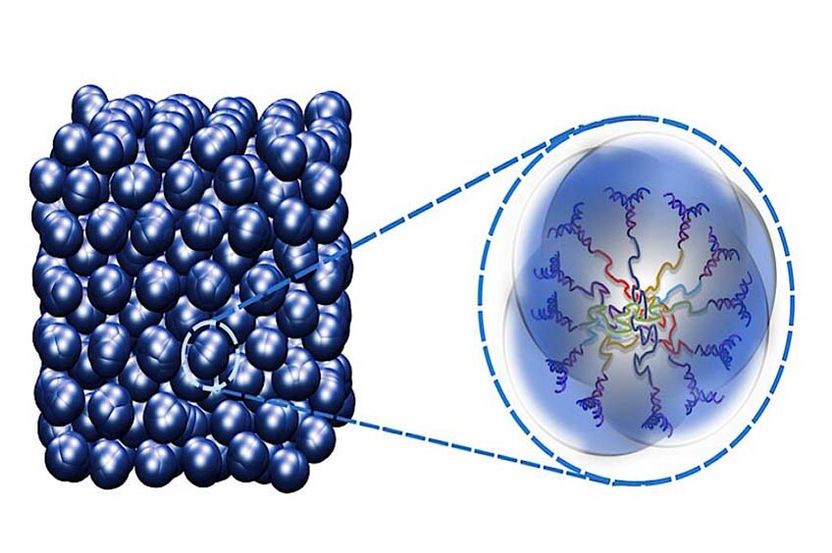Improved polymer and new assembly method for ultra-conformable 'electronic tattoo' devices
A group of researchers at Waseda University has developed processes and materials for ultrathin stick-on electronic devices using elastomeric "nanosheet" film, achieving ease of production while also preserving high elasticity and flexibility fifty times better than previously reported polymer nanosheets.

This is a sandwich of printed circuits and SBS elastomer is just 750 nm thick, for extremely high flexibility and comfort.
Waseda University
Smart electronics and wearable devices have several requirements for widespread adoption, especially ease of fabrication and wearing comfort. The materials and processes developed by the Waseda University team represent huge strides forward in both criteria.
Inkjet printing of circuitry and low-temperature fixing allow production of electronic devices which are durable and functional but also extremely thin and flexible enough for use as a comfortable, skin-fitting appliance, while also maintaining the easy handling properties and protection of elastomeric films. At only 750 nm, the new film is ultra-thin and flexible. These advances could help change the nature of wearable electronics from objects like wristwatches to items less noticeable than a band-aid.
The Waseda team also established a method of joining electronic components without soldering, allowing thinner and more flexible elastomer films (SBS: polystyrene-polybutadiene-polystyrene). Conductive "wiring" is created by inkjet printing, which can be done with a household type printer without the need for clean room conditions. Further, conductive lines and elements such as chips and LEDs are connected by adhesive sandwiching between two elastomeric nanosheets, without using chemical bonding by soldering or special conductive adhesives.
Thanks to the simple, low-temperature processes, the resulting ultrathin structures achieve better adhesion, without using adhesive matter such as tape or glue, better elasticity and comfort for skin-contact applications. The new system was proven functional for several days on an artificial skin model.
These results were achieved through collaboration among three specialties: Molecular assembly and biomaterials science; medical robotics and rehabilitation engineering; and micro-electromechanical systems, thanks to collaborative structures at Waseda University.
Uses for these products are expected to include human-machine interfaces and sensors in the form of electronic tattoos, as radically improved tools for the fields of medicine, healthcare and sports training.
Original publication
Original publication
Other news from the department science

Get the chemical industry in your inbox
By submitting this form you agree that LUMITOS AG will send you the newsletter(s) selected above by email. Your data will not be passed on to third parties. Your data will be stored and processed in accordance with our data protection regulations. LUMITOS may contact you by email for the purpose of advertising or market and opinion surveys. You can revoke your consent at any time without giving reasons to LUMITOS AG, Ernst-Augustin-Str. 2, 12489 Berlin, Germany or by e-mail at revoke@lumitos.com with effect for the future. In addition, each email contains a link to unsubscribe from the corresponding newsletter.
Most read news
More news from our other portals
Last viewed contents
Non-coding_RNA
Stable Growth at Analytik Jena after Nine Months - Operating earnings below expectations

New State of Matter: Crystalline and Flowing at the Same Time - Particles with pompom-like structure

A new concept could make more environmentally friendly batteries possible
Boulangerite




























































